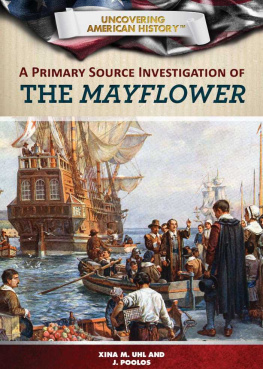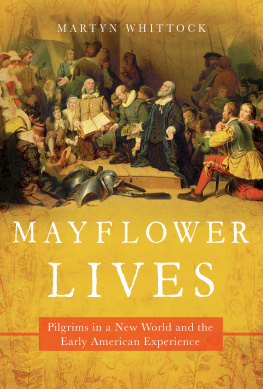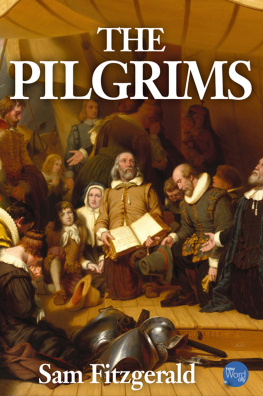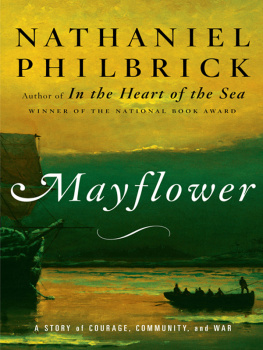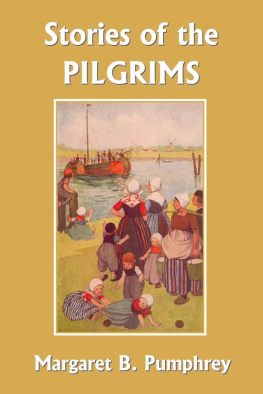Nick Bunker - Making Haste from Babylon: The Mayflower Pilgrims and Their World: A New History
Here you can read online Nick Bunker - Making Haste from Babylon: The Mayflower Pilgrims and Their World: A New History full text of the book (entire story) in english for free. Download pdf and epub, get meaning, cover and reviews about this ebook. year: 2010, publisher: Knopf, genre: History. Description of the work, (preface) as well as reviews are available. Best literature library LitArk.com created for fans of good reading and offers a wide selection of genres:
Romance novel
Science fiction
Adventure
Detective
Science
History
Home and family
Prose
Art
Politics
Computer
Non-fiction
Religion
Business
Children
Humor
Choose a favorite category and find really read worthwhile books. Enjoy immersion in the world of imagination, feel the emotions of the characters or learn something new for yourself, make an fascinating discovery.

- Book:Making Haste from Babylon: The Mayflower Pilgrims and Their World: A New History
- Author:
- Publisher:Knopf
- Genre:
- Year:2010
- Rating:3 / 5
- Favourites:Add to favourites
- Your mark:
- 60
- 1
- 2
- 3
- 4
- 5
Making Haste from Babylon: The Mayflower Pilgrims and Their World: A New History: summary, description and annotation
We offer to read an annotation, description, summary or preface (depends on what the author of the book "Making Haste from Babylon: The Mayflower Pilgrims and Their World: A New History" wrote himself). If you haven't found the necessary information about the book — write in the comments, we will try to find it.
Nick Bunker: author's other books
Who wrote Making Haste from Babylon: The Mayflower Pilgrims and Their World: A New History? Find out the surname, the name of the author of the book and a list of all author's works by series.
Making Haste from Babylon: The Mayflower Pilgrims and Their World: A New History — read online for free the complete book (whole text) full work
Below is the text of the book, divided by pages. System saving the place of the last page read, allows you to conveniently read the book "Making Haste from Babylon: The Mayflower Pilgrims and Their World: A New History" online for free, without having to search again every time where you left off. Put a bookmark, and you can go to the page where you finished reading at any time.
Font size:
Interval:
Bookmark:
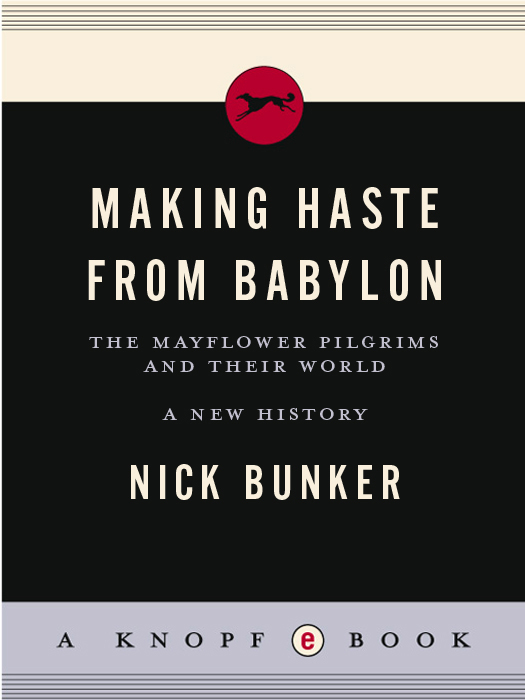

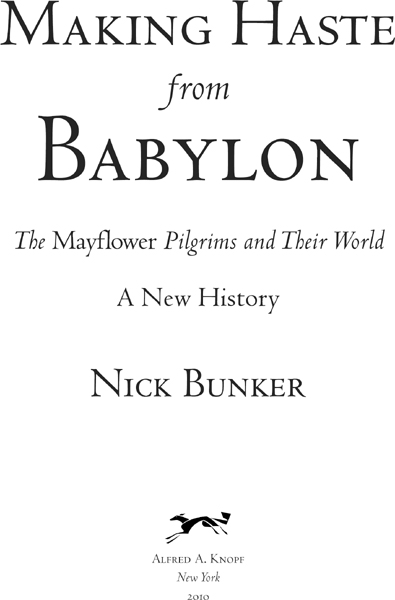
This book is dedicated to Margaret E. Mahoney,
president of the Commonwealth Fund of New York,
198095
Crueltye and bloodde is in our streetes, the lande abowndeth with murthers slawghters Incestes Adulteryes, whoredom dronkennes, oppression and pride even the leaste of these, is enowghe, and enowghe to make haste owte of Babylon.
AN E NGLISH P URITAN GIVING REASONS FOR MIGRATION TO A MERICA , 1629
Part One:
One:
Two:
Three:
Part Two:
Four:
Five:
Six:
Part Three:
Seven:
Eight:
Nine:
Part Four:
Ten:
Eleven:
Twelve:
Thirteen:
Part Five:
Fourteen:
Fifteen:
Sixteen:
Seventeen:
Part Six:
Eighteen:
Nineteen:
Twenty:
A pest, a fanatic, and a hypocrite, worse than a cattle thief: that was a Puritan, said King James I of England. Despite his many talents, the king had many flaws, and we cannot trust him to describe men and women whom he loathed. We have to find a less insulting way to define them, briefly but with fairness. Without such a definition, what follows will make very little sense.
The word Puritan first appeared early in the reign of Queen Elizabeth, in about 1565. Puritans were people who believed that she failed to go far enough when she established a Protestant Church of England. They urged her to abolish every last trace of Roman Catholic ritual that still lingered within it. They also wished to see an end to the hierarchy of bishops that the queen had left intact.
Her Majesty had not the slightest intention of agreeing to these demands. So, if Puritans could not have the kind of official religion they wanted, they chose to look for God in private. As the law required, they went to their parish church every Sunday, but at home they prayed, discussed sermons, and studied the Bible.
Mainly, Puritans read the book of Genesis, the letters of Saint Paul, and the Psalms. In the New Testament, they also paid special attention to the Acts of the Apostles. Here they found the story of the early Church, and a portrait of Christianity in what seemed to be its most authentic form. Free from distortion by popes and cardinals, it offered a model they felt obliged to copy.
Before the English Civil War, almost every single Puritan was also a Calvinist. What did this label signify? It meant that they followed the teachings of the French reformer John Calvin, who died in 1564. A lawyer by training, Calvin began by precisely defining the nature of God. Then, with the austere logic of a judge, he explained the fearful consequences of divinity.
For Calvin, God was an absolute monarch, a king who created the universe and then sustained it at every moment by a supreme act of will. But if God was almighty, and foresaw everything that occurred, then before the beginning of time he must have decided already the fate of each human soul. This was called the doctrine of double predestination.
Like Calvin, English Puritans believed that God had divided the human race in two. Before they were born, those chosen to receive the gift of faith were set apart for eternal life. They were called the elect. The remainder of humanity were doomed to punishment forever. Try as they might, they could never obtain salvation, and so they were known as the lost.
Did these ideas make men and women fatalistic? If human beings could not change the mind of God, why bother with faith, hope, and charity at all? In fact, Calvinists reached the opposite conclusion. If Christians wanted to be sure that they belonged to the elect, it was all the more important to do good deeds and to worship correctly. To persevere in holiness gave them the best evidence that they were saved.
Among the Puritans in England, some of those who persevered the most were a small minority known as Separatists. In terms of theology, they were strict Calvinists too, but they carried Puritan beliefs as far as they would go. They argued that the Church of England was beyond redemption because of its Roman Catholic past. In their eyes, it bore the marks of Satan, not those of Jesus Christ.
Because of this, Separatists felt compelled to do more than read and pray in private. They decided to leave the established Church entirely and set up alternative congregations. Untainted by the influence of Rome, these assemblies would be pure in their membership, and in the way they worshipped. In 1593, Parliament and Queen Elizabeth made Separatism a crime.

Rivers: from Gulf of Maine Watershed Map, Maine State Planning Office, 1991. Canoe routes: from David S. Cook, Above the Gravel Bar (3rd edition, 2007).
T HE B EAVER OF M AWOOSHEN
The planters heare aboutes, if they will have any beaver, must go 40 or 50 myles into the country, with their packes on their backes.
AN E NGLISH SETTLER ON THE COAST OF M AINE , J UNE 1634
S eventy miles from the Atlantic, in the central lowlands of Maine, if you head west along Route 2 and cross the Sandy River you will see a line of mountains far away upon your right. Built of slate, they rise to more than three thousand feet. They reach their finest color on a winters day, when the air is sharp and cold and the sunlight turns their eastern slopes from gray to blue. Above the modern town of Farmington, they form the outlying ramparts of a dark massif.
Here the influence of the ocean ends, and the American interior begins. Behind the blue ridge, the high ground extends for sixty miles, as far as the frontier with Canada. Between hills black and shaggy with spruce but dusted white with snow, the road ascends an esker, a ribbon of gravel, dropped into place by a glacier fourteen thousand years ago.
The esker makes a platform for Highway 27. Along the road, you climb until you reach a narrow pass and a chain of lakes. Beyond them lies a gloomy wetland, called Hathan Bog, where in the dusk moose wander from the swamp across the asphalt. Then, a little farther on, the highway arrives at a plateau, and a liquor store, and a customs post, at a hidden place named Coburn Gore, where day and night the Frenchmen thump back over the border in their logging trucks. Like the valleys of West Virginia, the pass supplies an aperture, an entry into the land beyond the mountains, at the northern end of the Appalachian barrier.
At places such as this, the west begins: but where did America start for new settlers arriving from England in the 1620s or the 1630s? Maybe they saw it first from ten miles out on the ocean, with a glimpse of sandy cliffs along the eastern rim of Cape Cod, or at forty miles, if their first sighting was Cadillac Mountain, above Bar Harbor, visible to any ship bound in from Newfoundland. Or did the New World really begin later? Did its strangeness dawn upon them when they saw ice jamming a river mouth as late as April, or a belt of white wampum beads, or a field of maize, or a man in deerskin breeches, with a shaved head and a torso painted purple? The point at which the alien was glimpsed for what it was, alarming, uncanny, or sublime, might occur at any of these moments, or at none of them. Half of the early migrants simply faded and died.
Font size:
Interval:
Bookmark:
Similar books «Making Haste from Babylon: The Mayflower Pilgrims and Their World: A New History»
Look at similar books to Making Haste from Babylon: The Mayflower Pilgrims and Their World: A New History. We have selected literature similar in name and meaning in the hope of providing readers with more options to find new, interesting, not yet read works.
Discussion, reviews of the book Making Haste from Babylon: The Mayflower Pilgrims and Their World: A New History and just readers' own opinions. Leave your comments, write what you think about the work, its meaning or the main characters. Specify what exactly you liked and what you didn't like, and why you think so.



